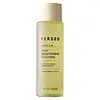What's inside
What's inside
 Key Ingredients
Key Ingredients

 Benefits
Benefits

 Concerns
Concerns

 Ingredients Side-by-side
Ingredients Side-by-side

Water
Skin ConditioningAlcohol
AntimicrobialGlycerin
Humectant1,2-Hexanediol
Skin ConditioningHouttuynia Cordata Extract
Skin ConditioningXylitol
HumectantSea Silt
Skin ConditioningPPG-13-Decyltetradeceth-24
EmulsifyingLithium Magnesium Sodium Silicate
AbsorbentParfum
MaskingCalcium Chloride
AstringentPropanediol
SolventEthylhexylglycerin
Skin ConditioningButylene Glycol
HumectantDisodium EDTA
Sucrose
HumectantArtemisia Vulgaris Extract
Skin ConditioningOryza Sativa Extract
AbsorbentDioscorea Japonica Root Extract
Skin ConditioningGlycine Soja Sprout Extract
EmollientRosa Canina Fruit Extract
AstringentTocopherol
AntioxidantSodium Benzoate
MaskingIndole Acetic Acid
Skin ConditioningWater, Alcohol, Glycerin, 1,2-Hexanediol, Houttuynia Cordata Extract, Xylitol, Sea Silt, PPG-13-Decyltetradeceth-24, Lithium Magnesium Sodium Silicate, Parfum, Calcium Chloride, Propanediol, Ethylhexylglycerin, Butylene Glycol, Disodium EDTA, Sucrose, Artemisia Vulgaris Extract, Oryza Sativa Extract, Dioscorea Japonica Root Extract, Glycine Soja Sprout Extract, Rosa Canina Fruit Extract, Tocopherol, Sodium Benzoate, Indole Acetic Acid
Water
Skin ConditioningHamamelis Virginiana Water
AstringentGlycolic Acid
BufferingLactic Acid
BufferingPropanediol
SolventGlycerin
HumectantNiacinamide
SmoothingPanthenol
Skin ConditioningMagnesium Ascorbyl Phosphate
AntioxidantKojic Acid
AntioxidantSodium Citrate
BufferingCitric Acid
BufferingArctostaphylos Uva-Ursi Leaf Extract
Skin ConditioningMorus Alba Fruit Extract
AntioxidantCamellia Sinensis Leaf Extract
AntimicrobialAzelaic Acid
BufferingDisodium EDTA
Phenoxyethanol
PreservativeEthylhexylglycerin
Skin ConditioningPotassium Sorbate
PreservativeSodium Benzoate
MaskingSodium Hydroxide
BufferingWater, Hamamelis Virginiana Water, Glycolic Acid, Lactic Acid, Propanediol, Glycerin, Niacinamide, Panthenol, Magnesium Ascorbyl Phosphate, Kojic Acid, Sodium Citrate, Citric Acid, Arctostaphylos Uva-Ursi Leaf Extract, Morus Alba Fruit Extract, Camellia Sinensis Leaf Extract, Azelaic Acid, Disodium EDTA, Phenoxyethanol, Ethylhexylglycerin, Potassium Sorbate, Sodium Benzoate, Sodium Hydroxide
 Reviews
Reviews

Ingredients Explained
These ingredients are found in both products.
Ingredients higher up in an ingredient list are typically present in a larger amount.
Disodium EDTA plays a role in making products more stable by aiding other preservatives.
It is a chelating agent, meaning it neutralizes metal ions that may be found in a product.
Disodium EDTA is a salt of edetic acid and is found to be safe in cosmetic ingredients.
Learn more about Disodium EDTAEthylhexylglycerin (we can't pronounce this either) is commonly used as a preservative and skin softener. It is derived from glyceryl.
You might see Ethylhexylglycerin often paired with other preservatives such as phenoxyethanol. Ethylhexylglycerin has been found to increase the effectiveness of these other preservatives.
Glycerin is already naturally found in your skin. It helps moisturize and protect your skin.
A study from 2016 found glycerin to be more effective as a humectant than AHAs and hyaluronic acid.
As a humectant, it helps the skin stay hydrated by pulling moisture to your skin. The low molecular weight of glycerin allows it to pull moisture into the deeper layers of your skin.
Hydrated skin improves your skin barrier; Your skin barrier helps protect against irritants and bacteria.
Glycerin has also been found to have antimicrobial and antiviral properties. Due to these properties, glycerin is often used in wound and burn treatments.
In cosmetics, glycerin is usually derived from plants such as soybean or palm. However, it can also be sourced from animals, such as tallow or animal fat.
This ingredient is organic, colorless, odorless, and non-toxic.
Glycerin is the name for this ingredient in American English. British English uses Glycerol/Glycerine.
Learn more about GlycerinPropanediol is an all-star ingredient. It softens, hydrates, and smooths the skin.
It’s often used to:
Propanediol is not likely to cause sensitivity and considered safe to use. It is derived from corn or petroleum with a clear color and no scent.
Learn more about PropanediolSodium Benzoate is a preservative. It's used in both cosmetic and food products to inhibit the growth of mold and bacteria. It is typically produced synthetically.
Both the US FDA and EU Health Committee have approved the use of sodium benzoate. In the US, levels of 0.1% (of the total product) are allowed.
Sodium benzoate works as a preservative by inhibiting the growth of bacteria inside of cells. It prevents the cell from fermenting a type of sugar using an enzyme called phosphofructokinase.
It is the salt of benzoic acid. Foods containing sodium benzoate include soda, salad dressings, condiments, fruit juices, wines, and snack foods.
Studies for using ascorbic acid and sodium benzoate in cosmetics are lacking, especially in skincare routines with multiple steps.
We always recommend speaking with a professional, such as a dermatologist, if you have any concerns.
Learn more about Sodium BenzoateWater. It's the most common cosmetic ingredient of all. You'll usually see it at the top of ingredient lists, meaning that it makes up the largest part of the product.
So why is it so popular? Water most often acts as a solvent - this means that it helps dissolve other ingredients into the formulation.
You'll also recognize water as that liquid we all need to stay alive. If you see this, drink a glass of water. Stay hydrated!
Learn more about Water